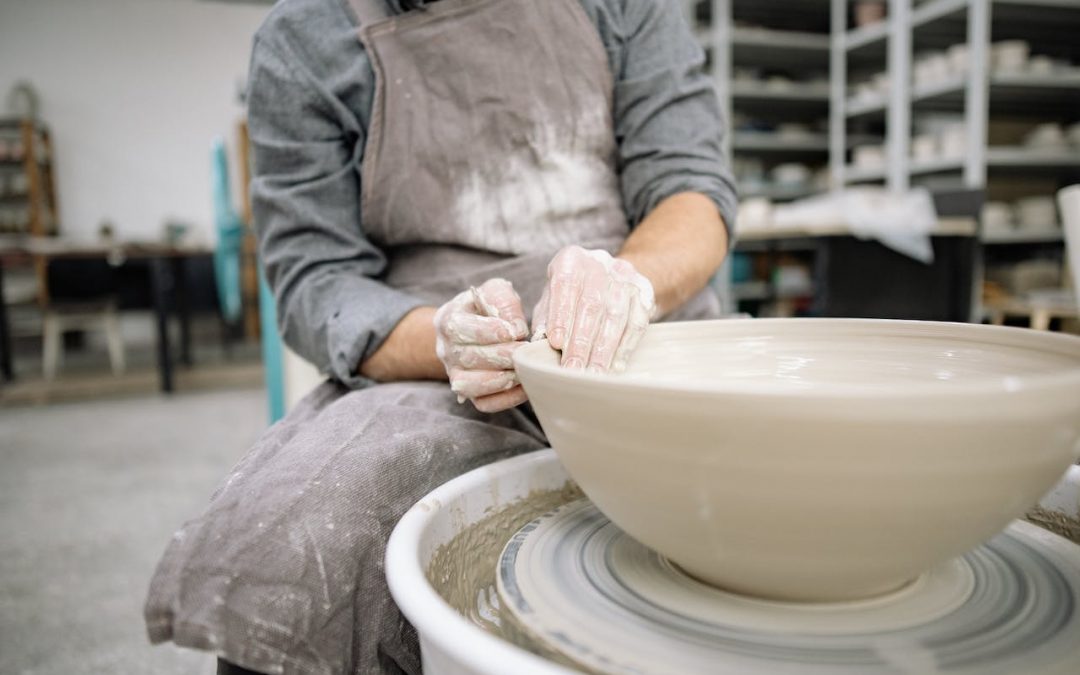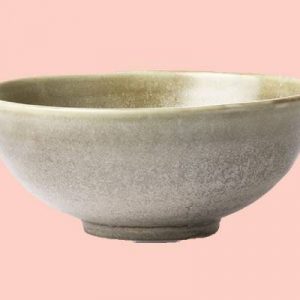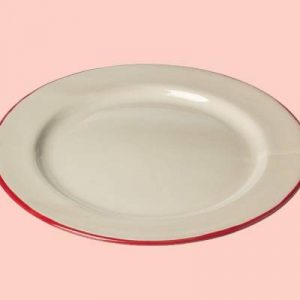Ceramic art is a beautiful and versatile form of creative expression that has been practiced for thousands of years. Whether you’re a complete beginner or an experienced artist looking to explore a new medium, this guide will help you embark on your journey as a ceramic artist.
In this comprehensive article, we will cover the essential steps, techniques, tools, and tips to help you get started and develop your skills in the world of ceramics.
Understanding the Basics
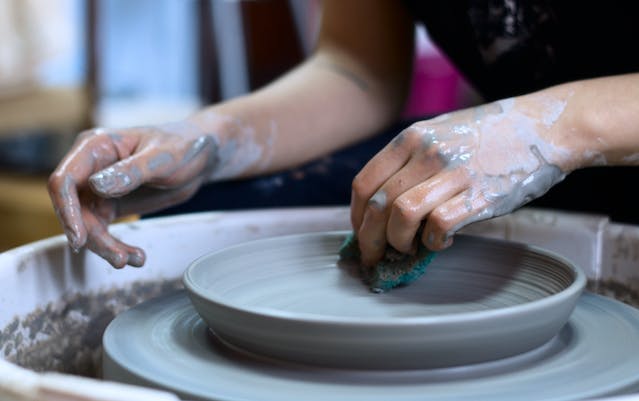
Before you dive into the world of ceramic art, it’s important to gain a solid understanding of the basics. Ceramics is the art of creating objects from clay, which is shaped, fired, and often glazed to produce functional or decorative pieces. It’s a diverse art form that encompasses everything from pottery and sculpture to tile and jewelry making.
1. Explore Different Ceramic Techniques
Ceramic art offers a wide array of techniques that you can experiment with. Handbuilding, which includes techniques like pinching, coiling, and slab-building, allows you to create unique shapes and forms. Alternatively, wheel-throwing on a pottery wheel can yield more symmetrical and precise pieces. Understanding these techniques will help you determine which aspect of ceramics you’d like to pursue.
2. Gain Knowledge of Clay Types
Understanding the different types of clay is essential. Clay bodies come in various varieties, such as earthenware, stoneware, and porcelain, each with its unique characteristics and firing temperatures. Research and experiment with these different types to find the one that suits your artistic vision and goals.
3. Acquaint Yourself with Glazes
Glazes are essential in adding color and finish to your ceramic pieces. Experiment with different glaze types, including transparent, matte, glossy, and textured glazes. Each type will impart a distinct look and feel to your work.
Setting Up Your Ceramic Studio
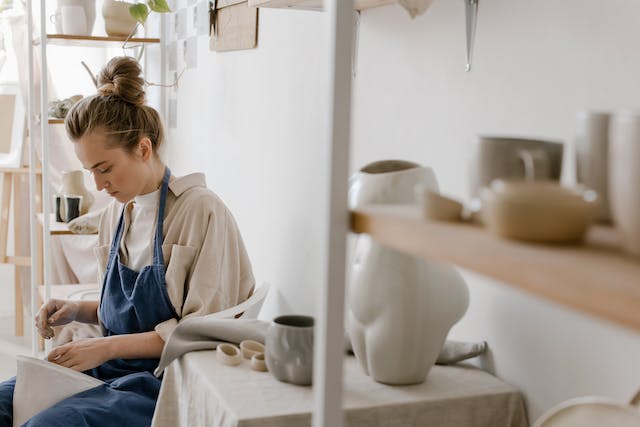
Once you’ve grasped the basics of ceramics, it’s time to set up your studio. A dedicated workspace is crucial for nurturing your artistic skills and allowing you to create without interruption.
1. Choose the Right Space
Select a space that is well-ventilated and easy to clean. Garages, basements, or spare rooms can work well as ceramic studios. Ensure that you have enough room for your equipment and materials.
2. Equip Your Studio
A ceramic studio requires specific equipment and tools. Some essential items include a potter’s wheel, kiln, worktables, clay, and glaze materials. Invest in quality equipment that suits your needs and budget.
3. Set Up for Safety
Safety is paramount when working with ceramics. Equip your studio with safety gear like respirators, gloves, and aprons. Make sure to install a fire extinguisher and have a first-aid kit on hand. Be aware of any hazards associated with clay dust and glaze materials.
Learning the Craft
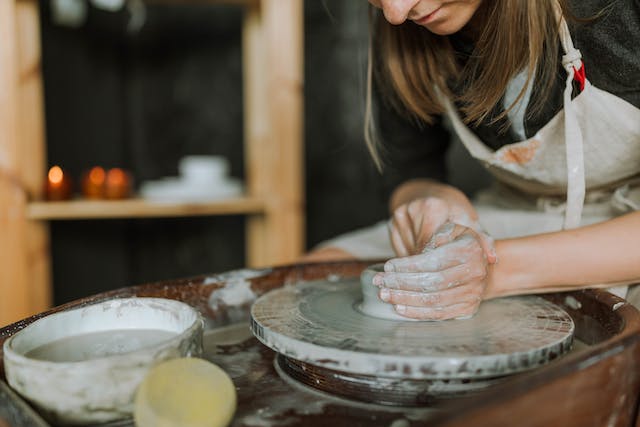
With your studio in order, it’s time to delve into the world of ceramics and start honing your craft.
1. Take Classes
Consider enrolling in ceramics classes or workshops. Learning from experienced instructors can accelerate your progress and provide valuable guidance. Many community colleges, art schools, and pottery studios offer such courses.
2. Explore Online Resources
The internet is a treasure trove of information for budding ceramic artists. There are numerous online tutorials, forums, and YouTube channels dedicated to ceramics. These resources can help you learn new techniques and get inspired by other artists’ work.
3. Practice Consistently
Like any art form, ceramics requires practice to improve your skills. Dedicate regular time to working in your studio and experimenting with different techniques. Create a schedule that allows for consistent practice and skill development.
Building Your Ceramic Skill Set
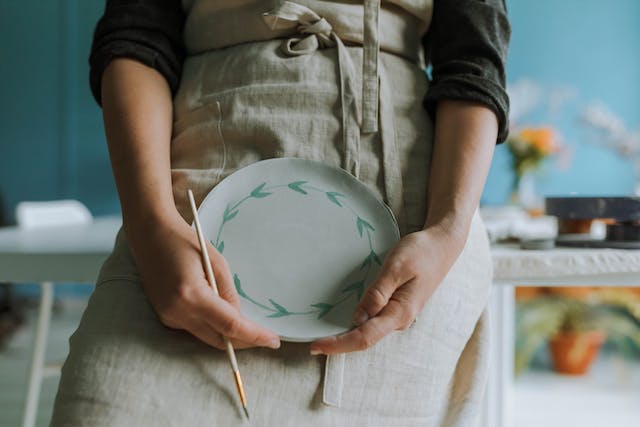
As you become more comfortable with ceramics, it’s essential to build a strong foundation of skills that will enable you to express your creativity effectively.
1. Master the Basics
Begin by perfecting the fundamental techniques such as centering clay on the wheel, handbuilding, trimming, and glazing. These skills will be the building blocks for more advanced projects.
2. Develop Your Design Sense
Consider studying design principles to enhance your creative vision. Balance, proportion, and symmetry are all key elements to consider when creating ceramics.
3. Experiment and Innovate
Don’t be afraid to experiment with new ideas and techniques. Innovation often leads to unique and distinctive ceramic pieces. Be open to pushing the boundaries of your comfort zone.
Firing Your Ceramic Creations
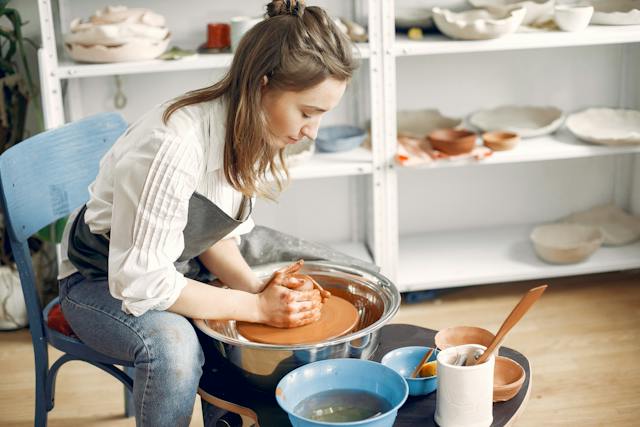
Firing your ceramics in a kiln is a crucial step in the artistic process. Understanding the firing process is essential for creating durable and functional pieces.
1. Bisque Firing
Bisque firing is the first firing that hardens the clay. It’s typically done at a lower temperature (around 1800°F) to prepare the pieces for glazing.
2. Glaze Firing
After bisque firing, it’s time for the glaze firing. This is where your pieces acquire their final finish and color. Depending on your choice of clay and glaze, this firing can reach temperatures of up to 2400°F.
3. Kiln Maintenance
Proper kiln maintenance is crucial for safety and achieving consistent results. Regularly inspect your kiln for wear and tear, loose elements, and proper ventilation. Follow the manufacturer’s guidelines for maintenance and safety practices.
Developing Your Unique Style
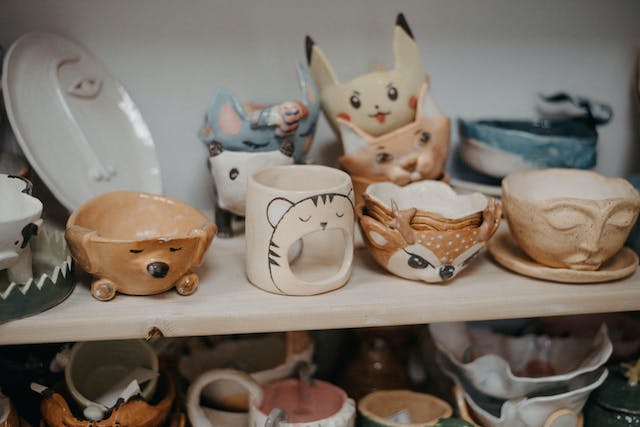
As you gain more experience and skill in ceramics, it’s important to develop your unique style as an artist.
1. Find Your Inspiration
Look for inspiration from various sources, such as nature, other artists’ work, or cultural influences. Inspiration can come from anywhere, so keep an open mind.
2. Experiment with Surface Decoration
Surface decoration, such as carving, sgraffito, and slip trailing, can add a unique touch to your ceramics. Experiment with these techniques to create one-of-a-kind pieces.
3. Create a Signature
Developing a recognizable signature style will set you apart as an artist. Whether it’s a particular form, glaze, or theme, having a signature element can make your work instantly identifiable.
Showcasing Your Work

Once you’ve created a body of work, it’s time to share it with the world. Showcasing your ceramics can be a rewarding experience and potentially lead to selling your pieces or gaining recognition as an artist.
1. Build an Online Presence
Create an online portfolio or website to display your work. Use social media platforms like Instagram and Facebook to share your progress, connect with other artists, and engage with potential customers.
2. Participate in Art Shows and Exhibitions
Look for local and regional art shows and exhibitions to display your ceramics. This is an excellent way to get exposure and gain feedback from the art community.
3. Sell Your Art
If you’re interested in selling your work, explore options like art fairs, galleries, and online marketplaces. Consignment with local stores or setting up your own online store are also viable choices.
Staying Engaged and Evolving
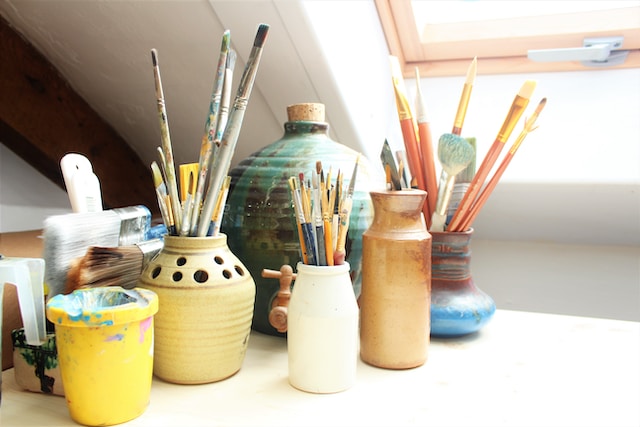
The journey of a ceramic artist is one of continuous learning and growth. Here are some tips for staying engaged and evolving in your craft.
1. Attend Workshops and Residencies
Participating in workshops and artist residencies can offer fresh perspectives and expose you to new techniques and ideas. It’s an excellent way to stay inspired and meet other artists. If possible, you can find jobs at your local studio to improve your skills.
2. Join a Community
Connect with other ceramic artists by joining local pottery guilds or online communities. These connections can provide valuable support, advice, and opportunities for collaboration.
3. Seek Feedback
Don’t be afraid to seek feedback on your work. Constructive criticism can help you identify areas for improvement and inspire new ideas.
Conclusion
Becoming a ceramic artist is a fulfilling and creative journey that requires dedication and a thirst for learning. Understanding the basics, setting up a studio, mastering the craft, and showcasing your work are all essential steps in your evolution as an artist. Remember to stay engaged, continue learning, and, most importantly, enjoy the process of creating beautiful ceramic art. Your unique perspective and creativity will make a valuable contribution to the world of ceramics.

